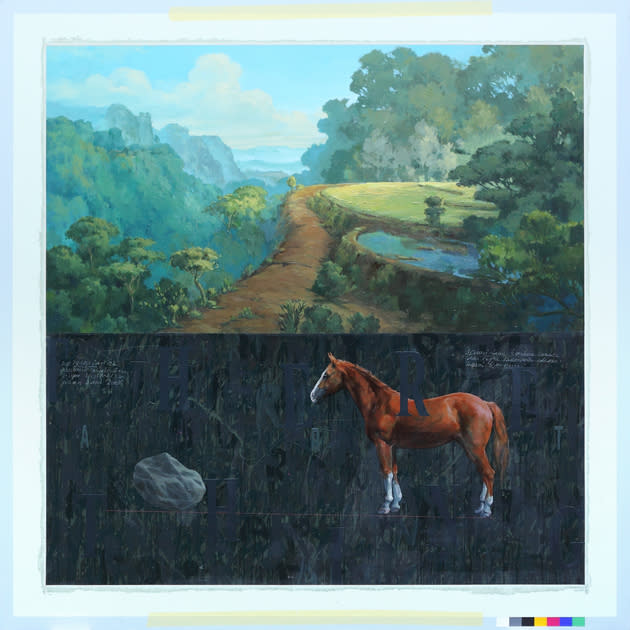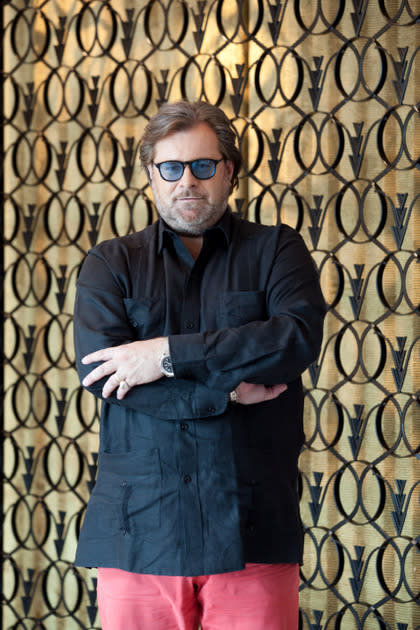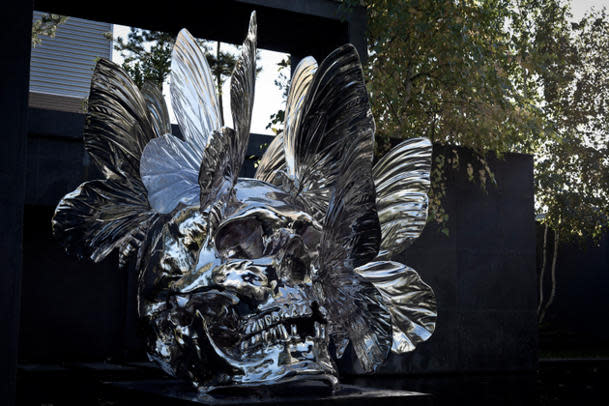Art Stage sets sights on emerging Southeast Asian talent

Southeast Asian art takes precedence at this year’s Art Stage Singapore.
In its third year, the annual contemporary art fair is set to highlight regional artists and galleries in a bid to continue building a platform for growth in the market, for both intertwining facets.
Expect galleries such as White Cube, from the traditional bastions of the art world in the West, to be juxtaposed with standouts in Southeast Asia as well.
There are a variety of featured pavilions as well, including an Indonesian pavilion. This hinges on the Indonesian art market being the driving force – economically and artistically as well, given that it is the strongest market in Southeast Asia – of the region. Thus, a dedicated showcase with more than 35 artists has been set up this year.
In addition, there will also be a ‘project stage’ section, a curated exhibition slated for emerging artists in Asia. This mixed bag with a Southeast Asian focus is not a chance move as it is representative of the bid to place the region on the world’s stage.
Art Stage Singapore founder and director Lorenzo Rudolf is the man behind show, and he spoke of the differing focal points of the art fair in 2013, in a bid to set Singapore on the map as a go-to centre for art. He says contemporary art is a global language and emphasises continuing with the status quo is not the way forward.
“Asia, if you compare it with America and with Europe, is not an open scene. When you go to New York, you know what happens in all continents. Or even in Europe, you have centres like Berlin, Paris and London," he said.
"Asia is really fragmented into many national scenes and markets. There are no Japanese going to China, no Chinese going to India, no Indians going to Korea. In other words, we need places where we can match make all these national things. And for that, Singapore is surely the right place," he noted.
Change-leader on a mission
Change is necessary and on the agenda, it would seem. And the Swiss entrepreneur should know what he is talking about.
This is the same man who helmed Art Basel in Switzerland, as its former art director. He took it from its inception as a low-key trade fair in Basel to what it is today: a grand confluence of high-end art, and pomp and pageantry, with millions of dollars at stake.
Today, Art Basel is the model, a "how-to" as it were, of putting together a successful, curated art fair that will draw in the most discerning of the global art audience. Art Stage Singapore, with Rudolf now at its helm, is one of the standout draws in the region as well, together with the Singapore Biennale.
Brusque and somewhat rough around the edges, you see that Rudolf’s demeanour could well be intrinsic to ensuring Art Stage Singapore’s continuing growth. To say he is goal-oriented and outcome-focused would barely even begin to describe the intensity that is part and parcel of the whole production. And without a doubt, it is a production.
He is intently focused on pushing through his agenda, almost to the exclusion of everything else. But he could be forgiven for coming on a little strong almost, in his bid to communicate the vision that he has for what is clearly his baby. It is apparent he thoroughly believes in the vehicle as an undisputed means for shining a spotlight on art with an Asian focus.
Competition welcome and complementary
While he admits Art Stage Singapore is a long way from being “on the top”, he says it has a pivotal role to play in the regional scene. Rudolf also makes quite a concerted and repeated effort to be clear that there is no competition – to his mind, at least – with Art Basel, and that only a “complementary situation” exists.
MCH Group, which owns Art Basel and Art Basel Miami Beach, bought a majority stake in Asian Art Fairs, which owns the Hong Kong fair ArtHK, in 2011. Thus, Rudolf is in the unenviable position of vying for a slice of the lucrative art market, whilst pitted against the very establishment he helped build. However, throughout the interview, he makes it clear that he is not competing with Art Basel, emphasising that the art stalwart is the bigger player, and that the distinctions between the two fairs are clear.
“Big galleries from all over the world want to play all over, and also in Asia. But in the end, we have to support Asian structures, which are normally less strong, and less powerful than western galleries. So we have to give them a certain platform," he said.
"And that is totally a different philosophy than that of the brand Basel. I think it is exactly this dualism which helps both fairs. If Basel is successful, it helps us because it creates the strength of the market. If we support the emerging part also, it helps Basel because it can go into the global market too. So it’s really a give and take," he added.
Asia as a front-runner in the near future
Specialised art dealer and advisor Guillaume Duhamel, founder of Duhamel Fine Art, spoke about the importance of the Asian market. He has over 20 years experience in the fine-art world, and is considered an authority on the market by industry professionals; he says Asia must be neither discounted nor underestimated for its worth to the market overall.
“The Asian market is already very big, it is ranked third after New York and London, and before Paris. How it evolves in time is important. In comparison to Europe and America, this market is new and needs to prove its stability and confirm its specificities," he said.
"In my opinion, it is here to stay and it is attractive for us because it is a growing market. Shows like Art Stage Singapore are very important as they create competition between cities and countries. Stimulation and enthusiasm are the bases of any market. It also gives opportunities to all parties: galleries, museums, collectors and artists," he observed.
According to artist Kongo, of French-Vietnamese descent, the presence of shows like Art Stage Singapore plays a critical role in introducing Asian artists to potential buyers and aficionados. He says shining the spotlight on Asian artists is important for the growth of the market itself.
“The market is important for artists like me, because it is often an entry point into the region. Asia is an important ground for us, even though it is relatively new, compared to say Europe. This is because many here appreciate art from different points of view than elsewhere. As an artist who is half-Asian, I am drawn to this point of view for my work as well, and am glad we have such shows to open up the market.”
Global art market analyst Artprice reveals Asia represented over 55% of the global art market in 2012. Of this, the China market took the reins with a 41% market share – this is as compared to 23% for the United States. The region is also slated to have a minimum share of 65% to 70% of the global art market by 2015, placing it as a serious contender to pip current leaders at the post.
While the Art Basel brand is a classic global brand, Art Stage Singapore is clearly on-track for growth and stature. Its relevance to the development of regional talent is apparent. It is also clear Rudolf himself is unwilling to take on the title of ‘also-ran’, in his bid to help build up the Asian market.
And he might be right to assume that the balance may tip in favour of regional numbers, in the near future. With over 120 galleries and approximately 75% of exhibitors being from the Asia Pacific region, Art Stage Singapore looks set to reaffirm its drive to shine the spotlight on Southeast Asian talent, for yet another year.
Art Stage Singapore will be held from 24 – 27 January this year at Marina Bay Sands Convention and Exhibition Centre. Visit www.artstagesingapore.com for ticketing details and related information.



